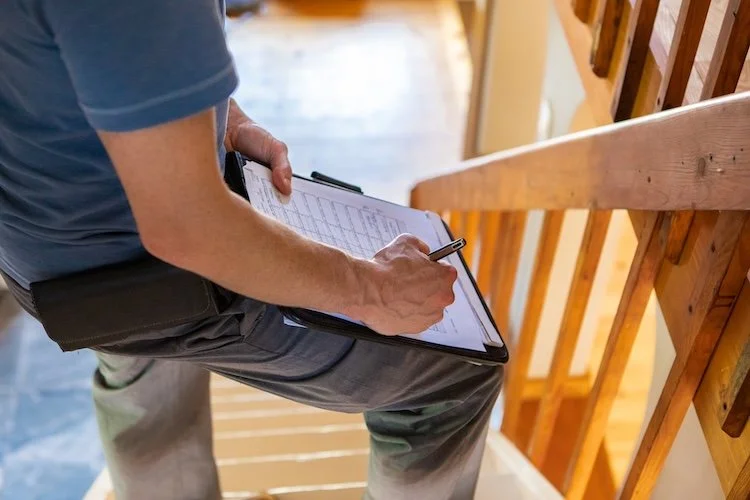What is a Timber and Termite Inspection?
Why Timber and Termite Inspections Matter in Australia
If you’re a homeowner or property buyer in Australia, timber and termite inspections should be at the top of your property maintenance checklist. Termites affect 1 in 3 Australian homes during their lifetime, often causing thousands of dollars in structural damage before the problem is even noticed.
These tiny pests are silent but destructive—and their presence can go undetected for years without regular inspections. If you live in your dream home, manage a rental, or think about buying, a timber and termite inspection can help. It gives you peace of mind and protects your investment.
What is a Timber and Termite Inspection?
A timber and termite inspection—also referred to as a timber pest inspection—is a visual, non-invasive examination carried out by a licensed professional. It’s often bundled with a building and pest inspection, especially during pre-purchase checks.
The goal is to detect the presence of termites and other timber pests (like borers or fungal decay), assess the condition of accessible timber structures, and identify any conditions that may increase the risk of infestation.
These inspections don’t involve pulling walls apart or invasive drilling. Instead, the inspector uses specialised tools like moisture meters, thermal imaging, and tapping sticks to evaluate key areas for hidden damage or pest activity.
What Do Inspectors Look For?
During a timber and termite inspection, professionals focus on identifying:
Timber Decay
Decay caused by fungi or moisture is a red flag. Damaged or soft timber could indicate longstanding moisture issues, which create ideal conditions for termites.
Signs of Termite Activity
Mud tubes: Termites build these for safe travel between their nest and food source.
Frass: Also known as termite droppings, often found near skirting boards or window frames.
Hollow sounds: Tapping timber and hearing a hollow echo could suggest internal damage.
Swollen floors or stuck doors/windows: May indicate warping caused by termite activity.
Conditions Conducive to Infestation:
Inspectors also assess areas that might attract termites, such as:
Moisture buildup
Timber-to-soil contact (e.g. fence posts or garden edging)
Poor ventilation in subfloors
Untreated landscaping timbers
Key Inspection Areas
Subfloor spaces
Roof voids
Internal timber structures
External features like decks, pergolas, and retaining walls
Fences and outbuildings
Why These Inspections Matter
Many Australians only realise the extent of termite damage once it’s too late—and very expensive. A timber and termite inspection can save homeowners tens of thousands in repairs by identifying issues early.
Termites Don’t Just Eat Wood
They target structural timbers, floor joists, roof trusses and more—undermining the safety of your home. Because termites live and eat silently, the damage isn’t always visible to the naked eye.
Essential Before Buying a Home:
A pest inspection before buying is not only common but highly recommended. In some cases, it's a condition of sale. Without it, you could unknowingly inherit a serious termite problem.
How Often Should You Get One?
Experts recommend annual inspections to stay ahead of potential infestations. However, in high-risk regions like coastal Queensland and New South Wales—where termite risk in Australia is highest—inspections every 6 to 12 months may be necessary.
Keep in mind that no home is truly termite-proof. Even steel-framed homes often contain timber elements in flooring, roofing or cladding.
What You’ll Receive in a Timber Pest Report
After the inspection, you’ll get a timber pest report, which includes:
A detailed summary of findings
Photographic evidence of any damage or infestation
Identification of risk areas (such as excess moisture or structural vulnerabilities)
Recommendations for treatment, ongoing monitoring, or further investigation
This report is often required for insurance claims, pre-purchase negotiations, or as a basis for professional pest treatment plans.
Common Myths About Termite Inspections
Let’s clear up a few misunderstandings:
“New homes don’t need inspections.”
Wrong. New homes may still be at risk if protective barriers are compromised or if the build used untreated timber.
“If I can’t see termites, they aren’t there.”
This is not true... Termites are masters of stealth, often active behind walls, under floors or inside ceilings.
“My building inspection covers termites.”
Not necessarily. A standard building inspection focuses on structural issues but doesn't always include detailed pest checks unless you book a combined building and pest inspection.
Protect Your Property With Seabreeze Inspections
A timber and termite inspection is not just a formality when buying a property. It is a smart and proactive step for every Australian homeowner. Termites are a big risk, so finding them early is your best way to prevent damage and save money.
Book your expert timber and termite inspection with Sea Breeze Building Co today—and protect your investment from the ground up.

